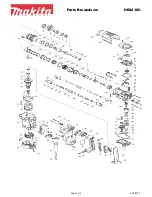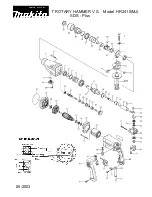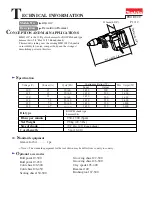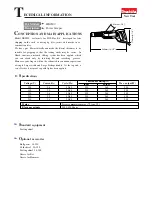
6 ENGLISH
Adjusting depth of nailing
CAUTION:
Always release the trigger and
disconnect the hose before adjusting the depth
of nailing.
►
1.
Adjuster
To adjust the depth of nailing, turn the adjuster. The
depth of nailing is the deepest when the adjuster is
turned fully in the A direction shown in the figure. It will
become shallower as the adjuster is turned in the B
direction.
If nails cannot be driven deep enough even when the
adjuster is turned fully in the A direction, increase the air
pressure.
If nails are driven too deep even when the adjuster is
turned fully in the B direction, decrease the air pressure.
Generally speaking, the tool service life will be longer
when the tool is used with lower air pressure and the
adjuster set to deeper depth of nail driving.
Hook
CAUTION:
Always release the trigger and
disconnect the hose before changing the hook
position.
CAUTION:
Never hook the tool at high
location or on potentially unstable surface.
CAUTION:
Do not hang the hook from the
waist belt.
If the nailer accidentally drops, it may
result in misfiring and personal injuries.
►
1.
Hook
2.
Hex socket bolt
3.
Hole
The hook is convenient for hanging the tool temporarily.
To change the hook position, remove the hex socket
bolt and switch the hook direction. The hook has two
holes. Choose the hole depending on your preferable
hook width.
Nose adapter
To prevent the surface of workpiece from being
scratched or damaged, use the nose adapter.
To detach the nose adapter from its housing base, pull
the nose adapter with your thumb in the direction of the
arrow.
To attach the nose adapter to the contact element,
press it onto the contact element while the protrusion
inside the nose adapter aligned with the gap in the
contact element.





























